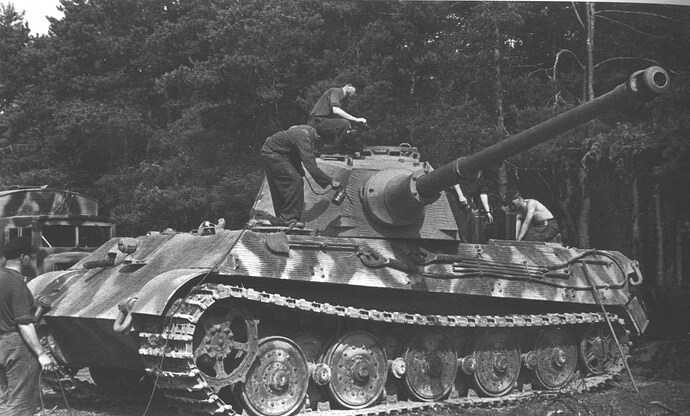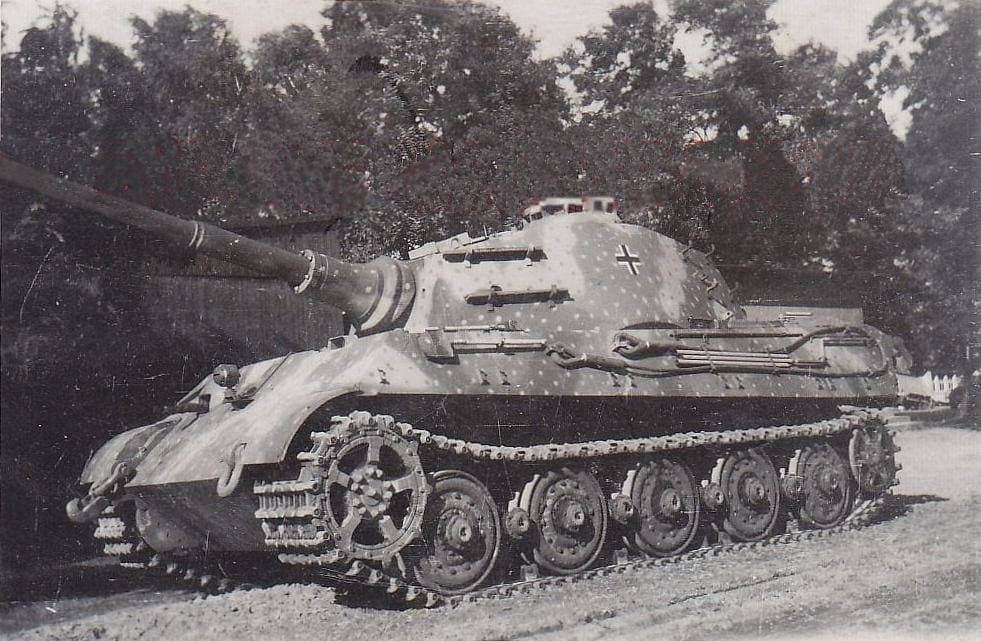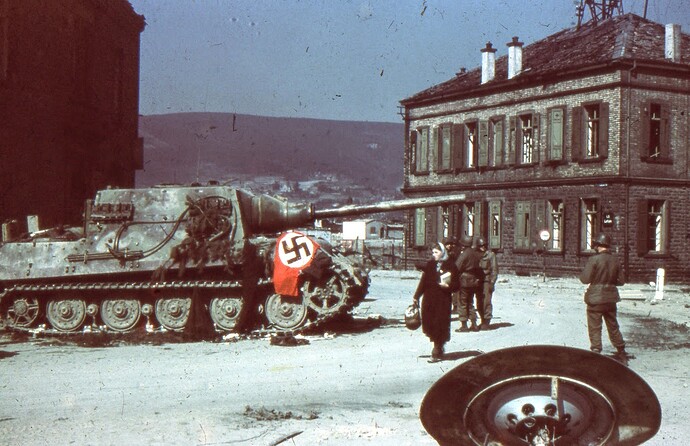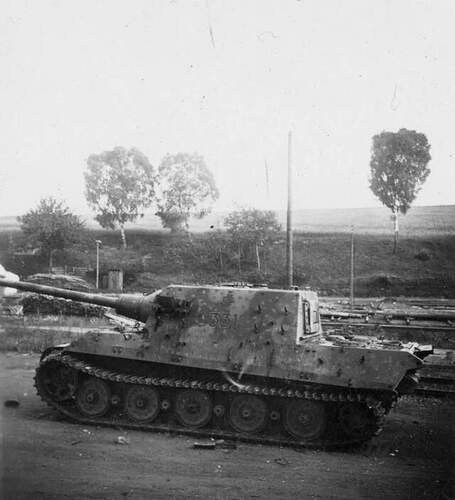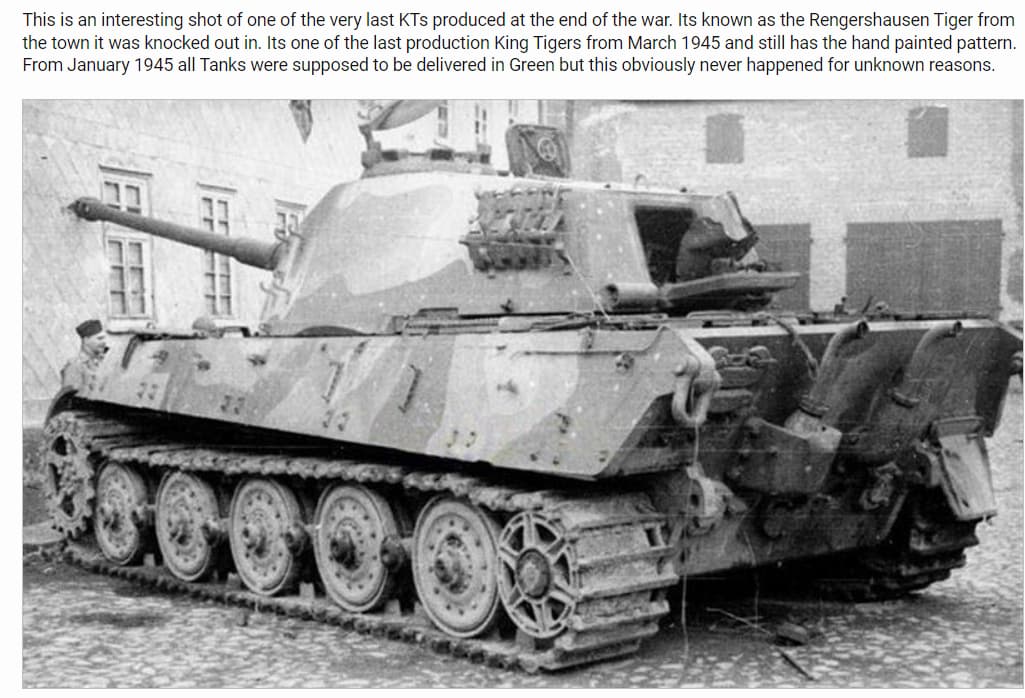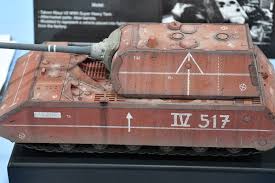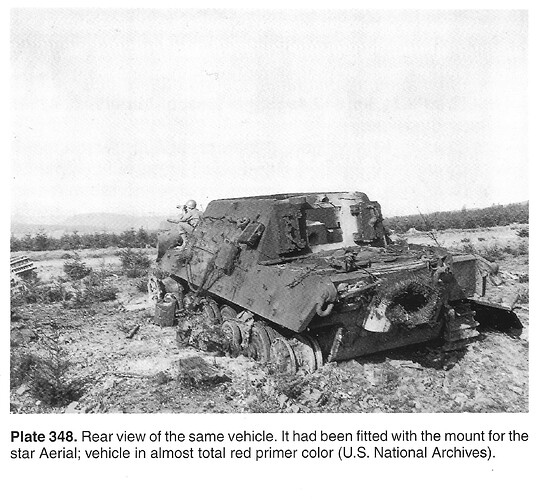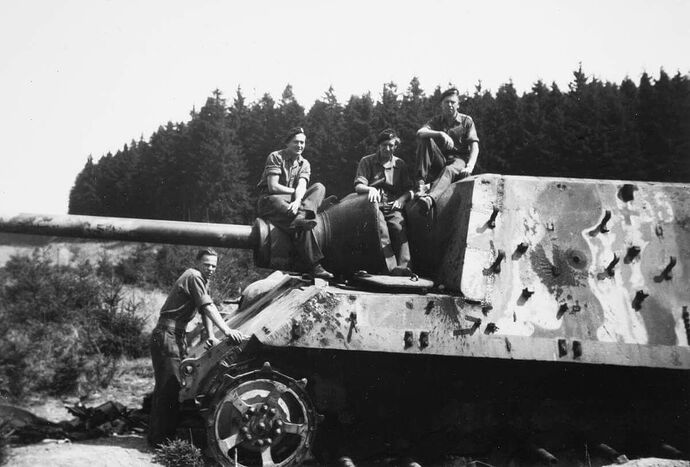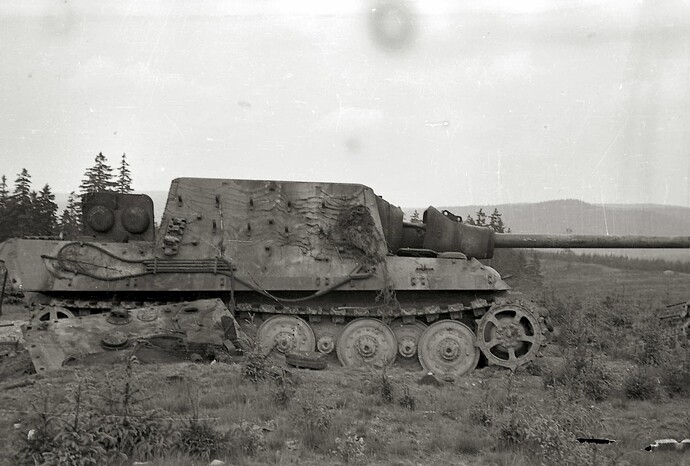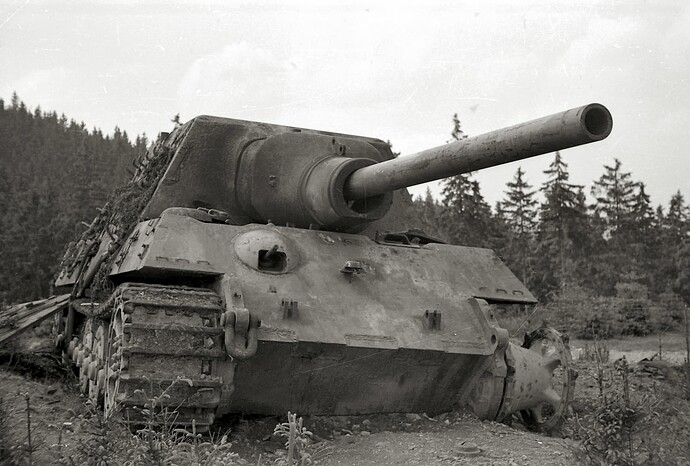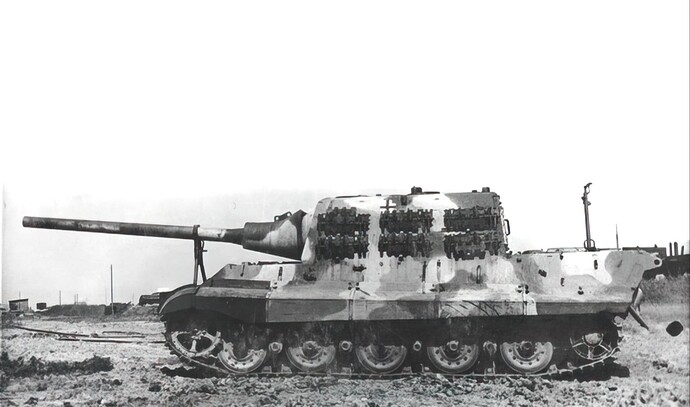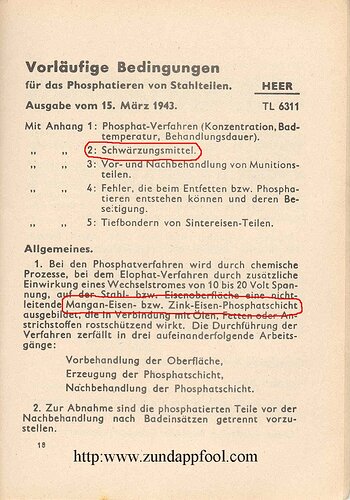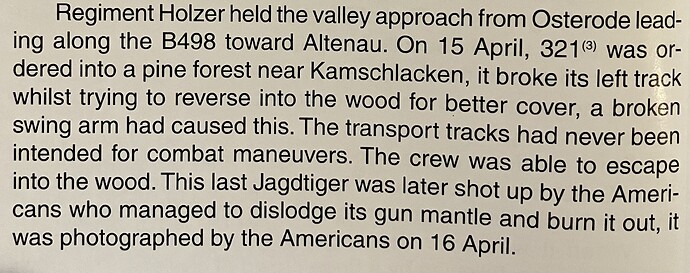On page 273 of Andrew Devey’s Jagdtiger, vol 2, is this photo of a 3/sPzJgAbt. 512 vehicle, note caption “vehicle in almost total red primer color”.
I’m sorry, but Mr. Devey is dead wrong.
Here is a high-resolution left-side image of the same vehicle;
If anything on this vehicle is painted in Red Oxide Primer, it is the areas that would have been underneath the side skirts, which can plainly be seen as a different tone than the adjacent 3-tone camo. Here is the right side of the same vehicle;
And now the front;
And finally, another large, left side view;
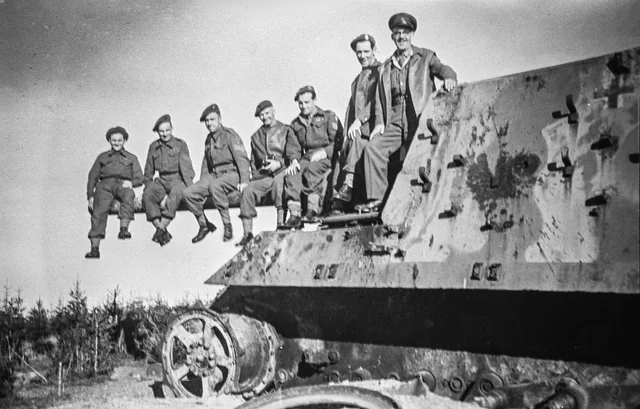
So I am to believe the author that the entire rest of the vehicle was fully painted in a standard, 3-tone camo, but the left rear of the vehicle rolled out into combat painted only in Red Oxide Primer? I don’t think so. What we are seeing is a blown-up and burned-out vehicle, not a mythical unicorn.
In addition, the second to the last 12.8cm armed Jagdtiger built, (not including the seven or eight 8.8cm armed versions left at Nibelungen Werk for lack of gun sights and blown-up on May 4th.) was finished on April 15th, 1945, Fahrgestell nummer 305083. This vehicle was captured intact by Soviet forces on May 5th. It is currently on display at Kubinka. Here it is shortly after its capture.
The neatly applied, 3-tone paint scheme can be clearly seen. The only parts left in red primer are the front mud guards and the first panel of skirts, which may have been added after its capture, according to statements from other authors, as they are the final type with the raised ridge stiffener as seen on final Tiger II production, but not seen on any other Jagdtiger.
Obviously, German industry at the time suffered from severe material shortages of all types. Among those shortages was the shortage of Lead. If other colors of paint were in short supply, why wouldn’t Lead Oxide primer have been too, it was used as a primer on AFVs throughout the entire war? What’s more important, paint or bullets? While Germany had near self-sufficiency in terms of ore reserves for magnesium, zinc and lead, it’s a long series of processes from mining the ores, smelting the ores and processing the metals into paint pigments, all the while being subject to disruptions from air raids, transportation delays, labor, etc. This would also account for the reports of Zinc and Manganese Phosphates being used as primers, as seen on vehicle’s color photos taken at the end of the war inside the bombed-out factories, as well as actual documentation describing its use.
